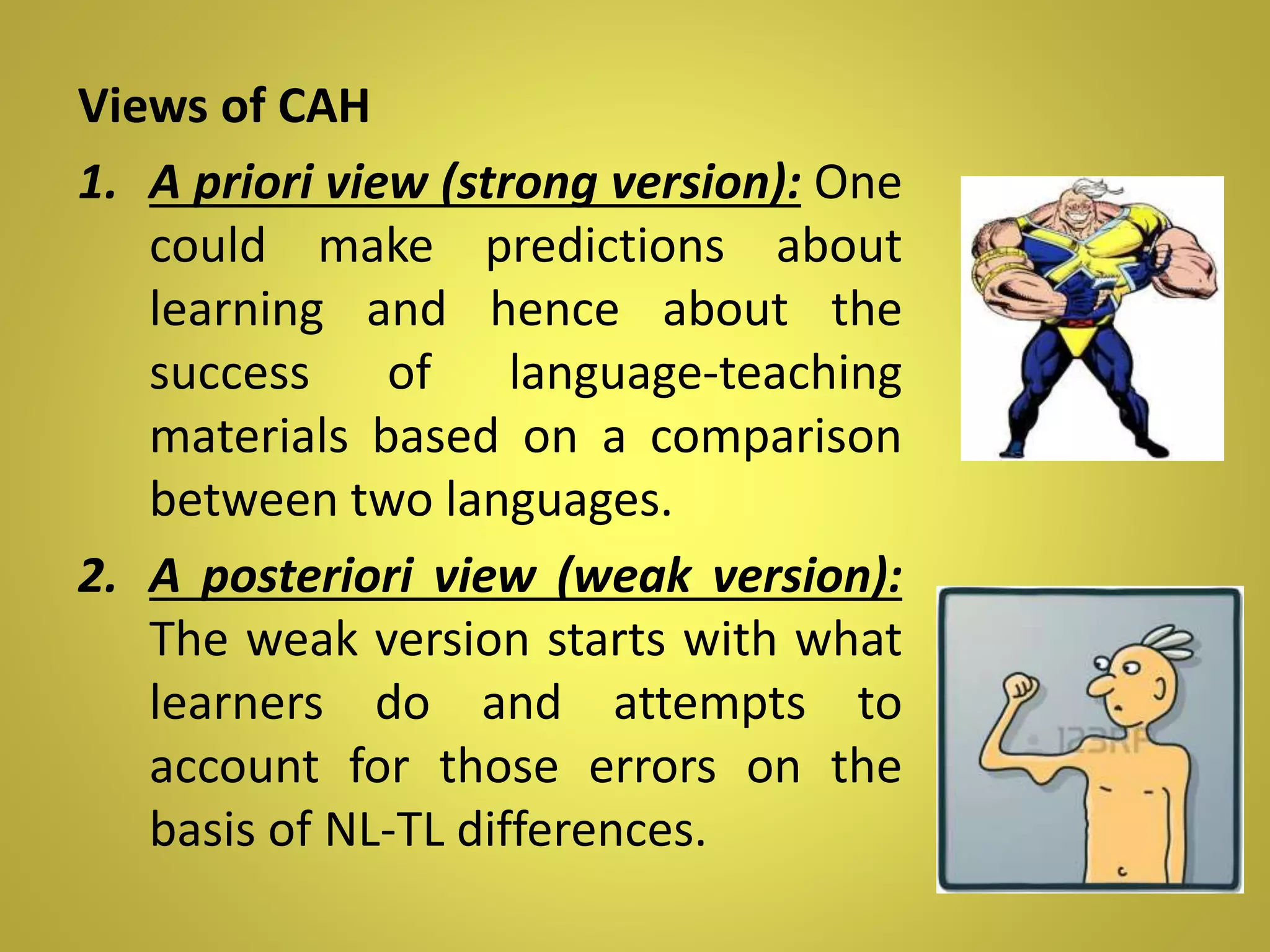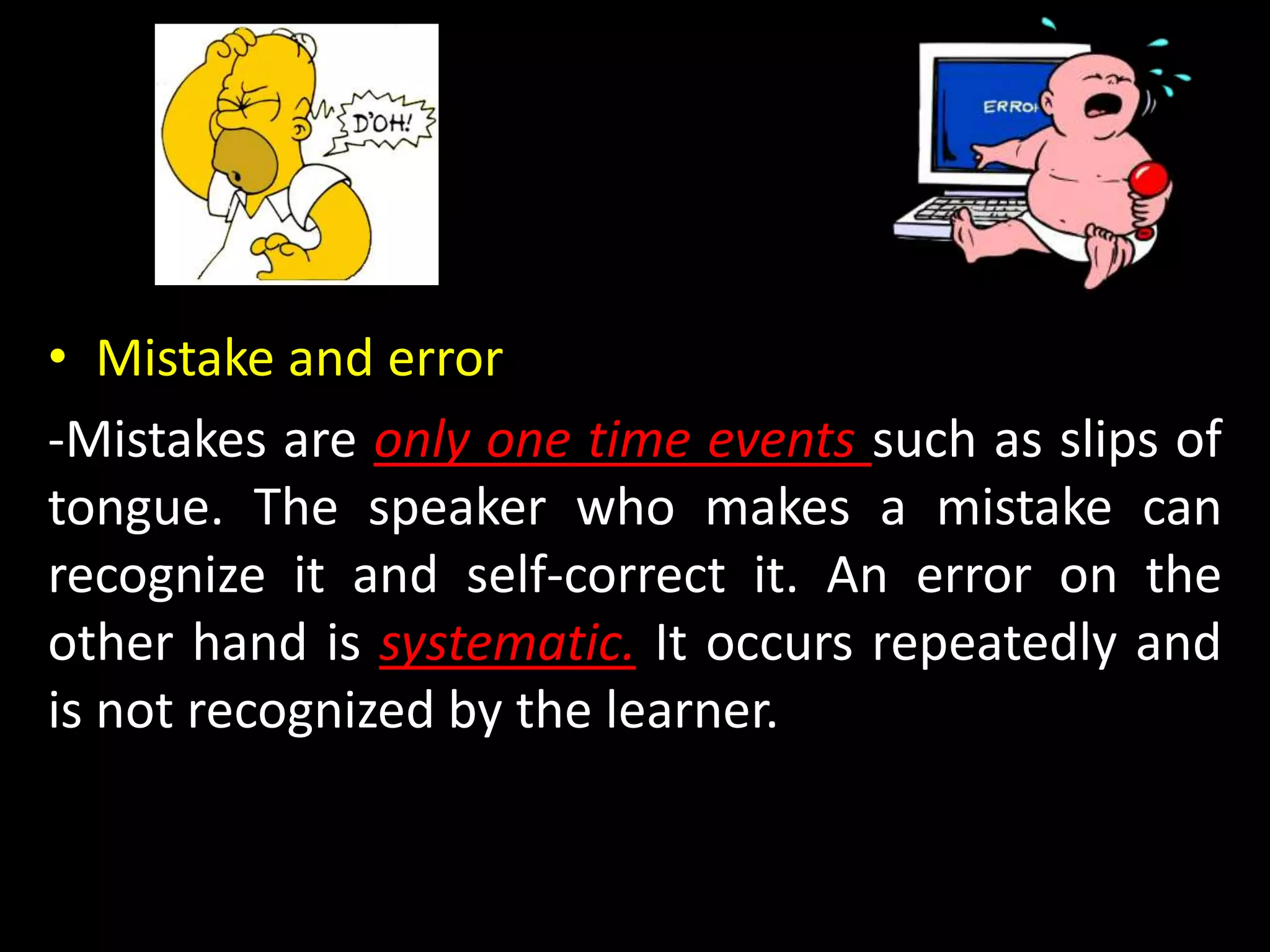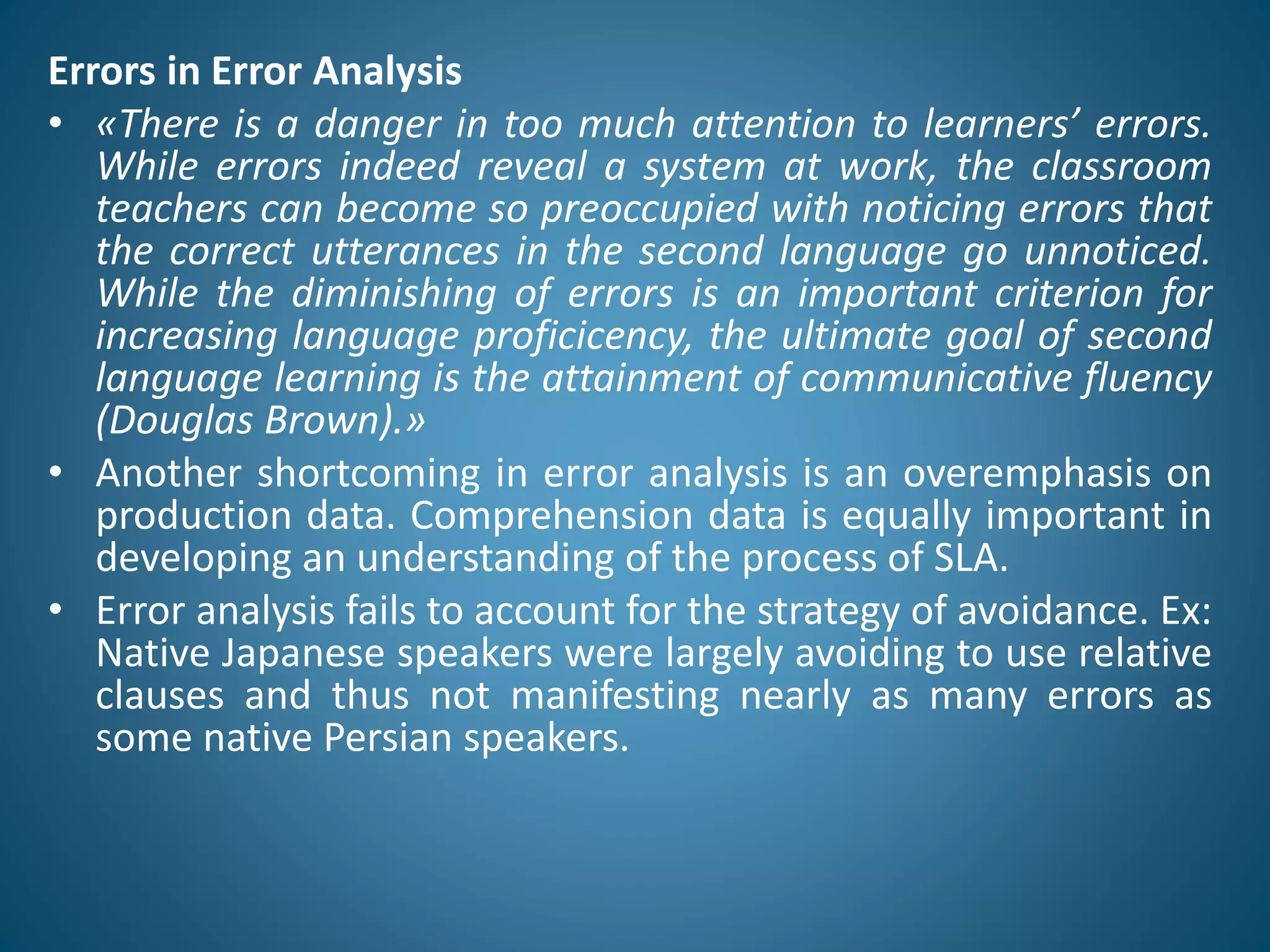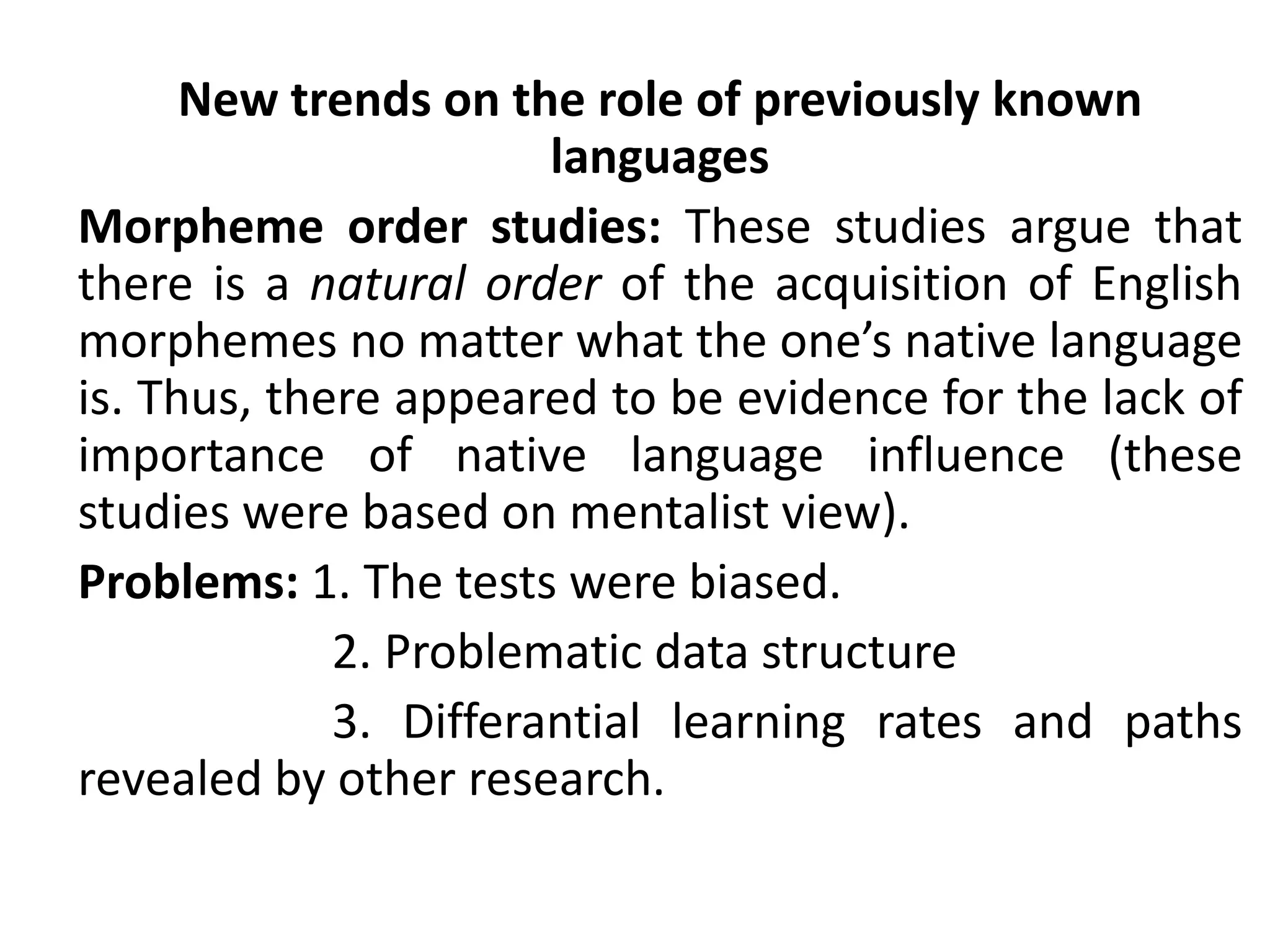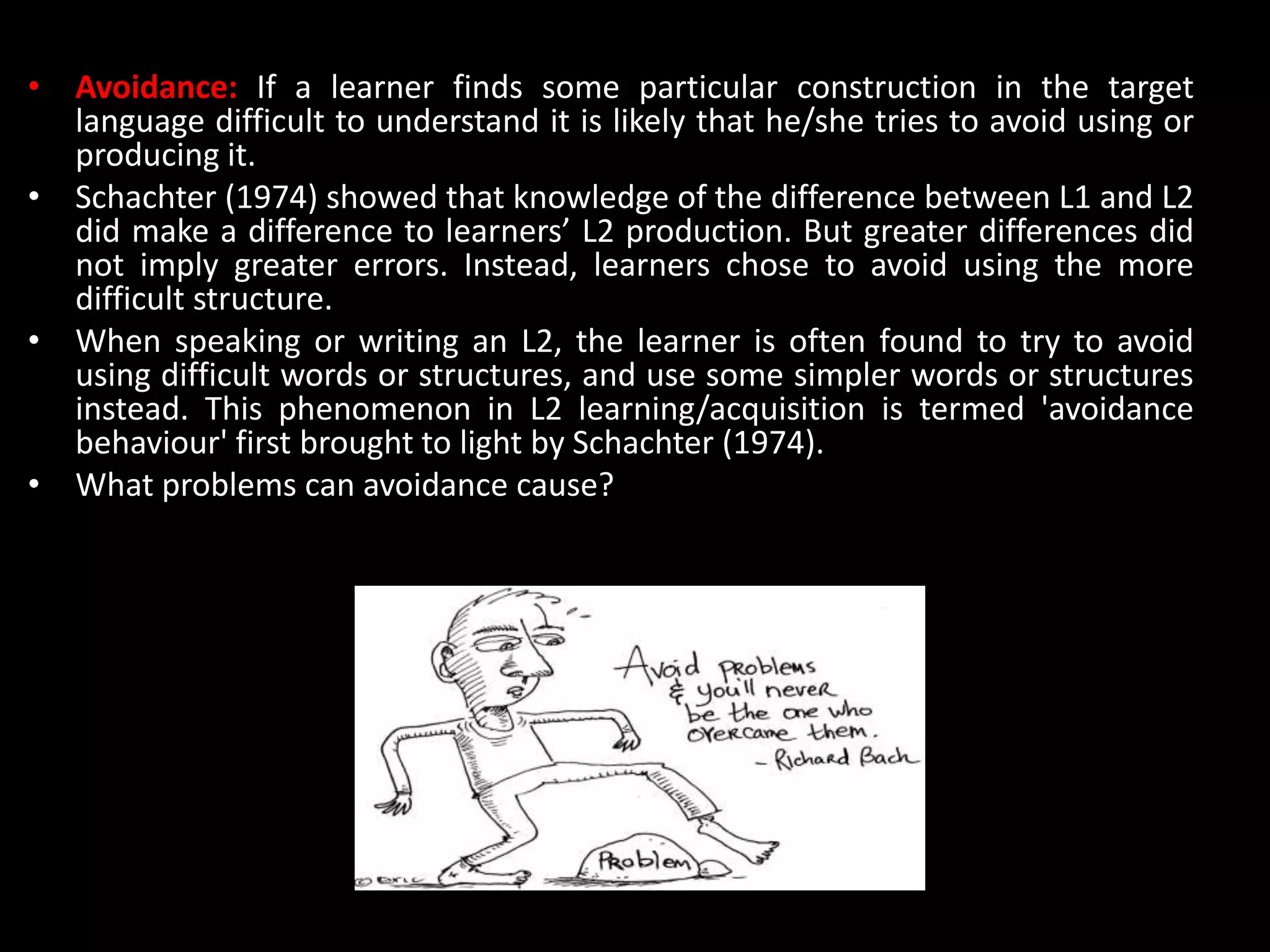This document discusses the role of native language in second language acquisition. It describes language transfer as when prior learning influences new learning. Transfer can be positive (facilitation) or negative (interference). Language transfer specifically refers to applying rules from one's native language to a second language. The Contrastive Analysis Hypothesis aimed to compare languages to predict learning difficulties but made many incorrect predictions. Error Analysis then focused on analyzing learner errors compared to the target language rather than the native language. Early errors tend to be from interlingual transfer while later errors involve intralingual transfer within the target language system. The influence of native language is complex with factors like avoidance and overproduction also playing a role in second language acquisition.







